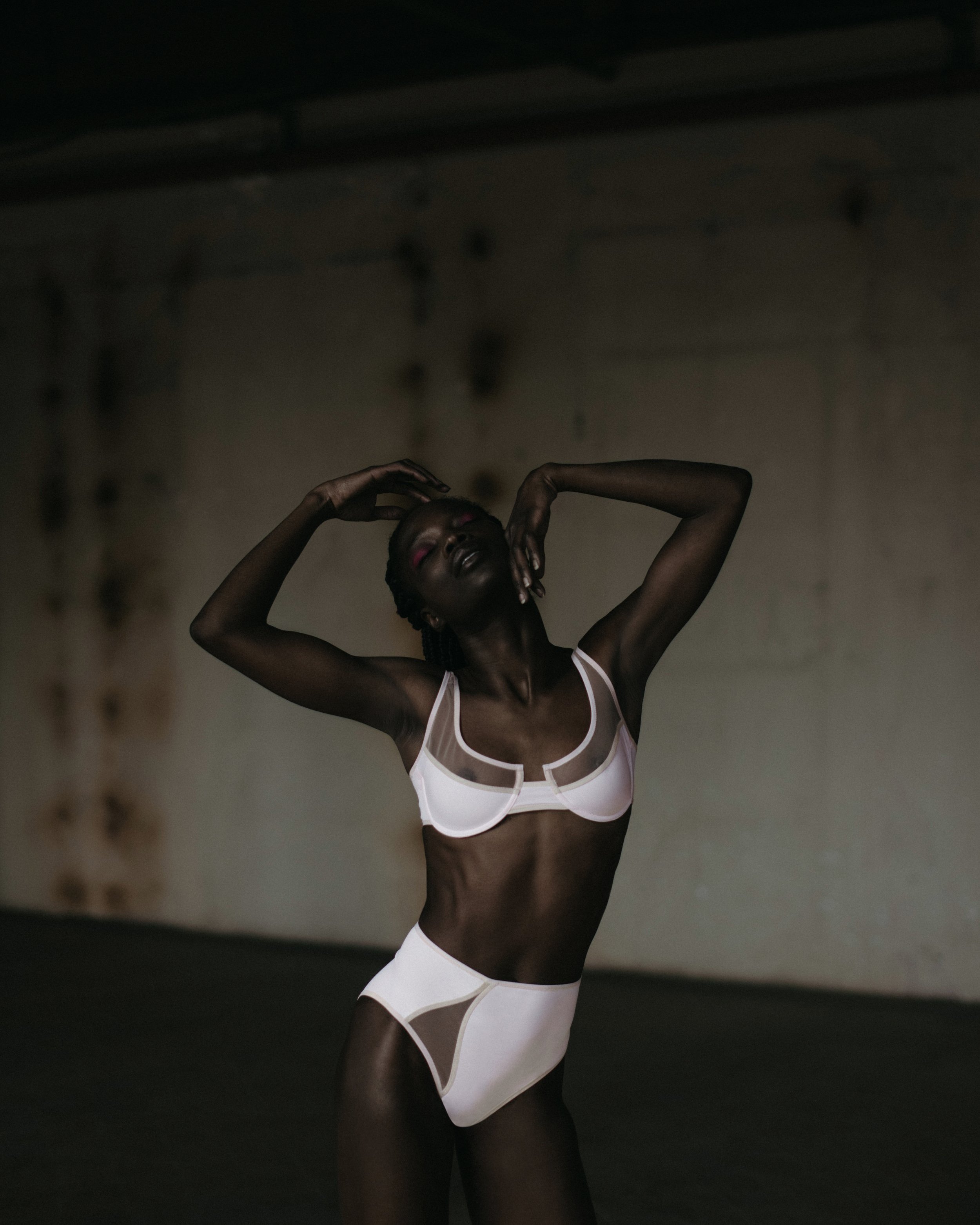
Narture
From bread surplus to textile pigment
#breadsurplus #circularentrepreneurship #fossilfreepigment
We hate to break it to you, but there is a good chance every single piece of clothing in your wardrobe was dyed with fossil-based pigment. Every time we wash our clothes, tiny plastic particals escape into the water.
The good news: Annabelle, passionate visual artist and engineer, has figured out how to grow pigment with fungi, yeast and bacteria, feeding on bread surplus. The first collection of lingerie dyed with her pigment has just been released, and it’s stunning.
Did you simply wake up one day with the desire to dye knickers with bread surplus?
Annabelle Cassiman, Narture’s mamma:
Why, yes! Although a long process preceded that one inspired morning. Beside being an industrial engineer, I’m a visual artist, with an all-time passion for drawing. I love painting, too, but paint is nearly always made from fossil fuels. Think of acrylic paint, for instance, which isn’t so different from plastic.
Through the serendipity of life, I got to know Neri, the designer behind Under Thy Skin and Joris, co-founder of FoodWIN. Joris taught me dumpster diving. One day, holding lots of nearly perished tomatoes and peppers, I realized I could make pigment from food waste. Then, Neri told me she too was frustrated with the lack of natural dyes for her lingerie.
One thing led to another, and via the Urban Bio Refinery project of GLIMPS.bio, I set up the first experiments and worked out a business model.
Picture: Jana Germanus, Under Thy Skin, lingerie dyed with Narture’s organic pigment
How does bread surplus become pigment?
Yeast and fungi love to feed on carbon resources such as starch, and also on nitrogen from gluten. Bacteria are a little different, as they stick to the proteins. They nourish and nourish, and at one point the food runs out. They then produce alarm substances, which happen to be very colorful.
When the surplus bread reaches our laboratory, we dissolve it in water. It becomes a bread soup. We test it and stabilize it, because the bread surplus on Tuesday may be different from that on Friday. In the soup, we grow the fungi, yeast and bacteria.
After just four days, we can harvest the pigments. Some we can harvest directly, some pigment is still inside the fungal cells. We figured out a way to extract it, without removing the bread residues. This means we can use 100% of the bread surplus, leaving zero waste behind.
What is the - potential - impact of this new pigment on your business and society?
We’ve developed a fully organic, zero waste pigment, which can be used to dye both organic and synthetic textiles.
Compared to the status quo and reigning assumptions, this beats all the odds. Textile pigments are either fossil-based and highly polluting. In rare cases they are plant-based, with often disappointing technical qualities. It was generally assumed that organic pigments wouldn’t work on synthetic textiles. But we’ve proven that it does.
You might wonder: why bother so much with these synthetic textiles? The answer lies in our client-focused approach. Neri, the designer we’ve mostly worked with this far, makes lingerie. Although she’d be thrilled to work with organic material only. But if we’d leave synthetics like elastane and polyamide behind, lingerie would lose its crucial elasticity.
From working with Neri we also learned where our big added value for designers lies. Traditionally, eco-friendly, industrial fabrics are sold at a minimum of 600 meters. It’s hard for designers to simultaneously invest in such a large minimum quantity and manufacture the variety of designs they want to offer their clients. We’re looking into setting up a business model that caters to the dual need for working with organic dyes and smaller fabric batches, by dying the fabrics ourselves on a semi-industrial scale.
Even though the market for organic dyes is niche and the designers we work with are fairly small, we do aim to eventually produce at an industrial scale. We think we can produce at a cost of 10 to 15% higher than current fossil-based dyes.
How did GLIMPS.bio help you on your way?
GLIMPS helped us work out the business case and helped us find financing for the first phases of experimentation and business development. They also helped us get connected to the right suppliers and production partners. Perhaps most important of all, they were a reliable, like-minded sparring partner, giving moral support and encouragement.
What’s your advice to others who want to transform food surplus?
One: believe in yourself. Cliché and true. If your intuition tells you to go and explore something, don’t hold back.
Two: don’t do it alone. Surround yourself with people who share your vision. Their support is key.
If you’d like to know more, you can get in touch with Annabelle via LinkedIn.

“We’ve developed a fully organic, zero waste pigment, which can be used to dye non-organic textile materials. Compared to the status quo and reigning assumptions, this beats all the odds.”
— Annabelle Cassiman, founder, Narture
Picture: Jana Germanus, Under Thy Skin, lingerie dyed with Narture’s organic pigment
From waste to revenue,
from fossil to bio-based.
We’ll help you from A to Z.



